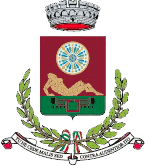
Thiesi
The now-demolished church of Santa Maria delle Nevi, which was first noted as a toponym in the Condaghe of St. Peter of Silki (11th–13th century), served as the hub of the community of the villa of Tigesi.
As a member of the Cabuabbas curatorate, Thiesi belonged to the Torres Judicature. When the Judicature was over, it went to the Doria and subsequently to the Arborea. After their conflicts over ownership of the island came to an end in the fourteenth century, the Catalan-Aragonese established the Marquisate of Montemaggiore.
Thiesi was a key figure in the late eighteenth-century Sardinian Revolution. When the Marquisate’s domains were used to write the first notarial actions, or instruments of union, the anti-feudal struggle got underway.
I moti popolari furono violentemente repressi il 6 ottobre 1800, anno tristemente noto ancora oggi come «s’annu de s’atacu».
The Prison Tower
The nearby Baronial Palace’s architectural complex was expanded with the construction of the Prison Tower in the middle of the fifteenth century. Its goals were to keep an eye on the village’s sole access road, regulate trade, and manage traffic patterns in and out of Thiesi village.
The tower's original purpose was lost when the hamlet became larger in the sixteenth century, and it was subsequently turned into a place of imprisonment.
The feudal lord had the authority to administer justice in Sardinian villages, and the people living in Thiesi were required to pay certain fees, such as the carcelleria, which was essentially a levy on baronial jails. The edifice saw some alterations in 1770, as stated in the report written for Viceroy Ludovico d’Hallot des Hayes’ visit. The dwelling accommodations of the jailer, together with a female and male cell, were located within the Torre Prigione.
A narrow ‘secret’ cell with a wolf’s mouth opening completed the picture. About 1960, the facility was progressively demolished.
The Town Hall, once the Baronial Palace
The Manca family, who possessed the feud of Montemaggiore from the fifteenth century, constructed a home (Su palatu) on a hill that was positioned carefully at the village’s entrance. The house was fairly simple, mostly used as the administrative tribunal’s seat and sometimes as a place to host the feudal lord.
“Su passigiadore” or “bicocca,” a sort of observatory from which one could observe the entire valley and the communication channels, was one of the dwelling’s attractions.
Thiesi's urban fabric still bears traces of the mediaeval past.
The saint Victoria Church
Dating back as early as the 15th century, the parish church of St. Victoria is distinguished by its Gothic-Aragonese layout, a façade enriched by an elaborate rose window and a monolithic architrave, situated at the entrance, through which you can marvel at a theory of saints, sculpted in popular style, among which St. James, protector of pilgrims and St. Victoria, patron saint of the village, stand out. The belfry was erected in the 17th century owing to the residents’ revenue.
A Thiesian art: the tanning business
A gradual recovery started in the village of Thiesi following the end of feudalism. Some breeders started a ground-breaking cattle trade with France in the middle of the 19th century, arriving at the port of Marseilles. The leather industry flourished as a result of the expansion in agro-pastoral activities, as the mural by artist Pina Monne illustrates.
The Anti-Baronial Mural in Sassu
The piece, created by Aligi Sassu in 1962, famously depicts a moment in the anti-feudal movement. As was his sad habit, Antonio Manca, Duke of Asinara and Marquis of Montemaggiore, is said to have forced one of his vassals, Sebastiano Dore, to bend over during one of his hunting expeditions in the forests of Thiesi so that, laying on his back, he might ride his horse. The Dore became so enraged that he could no longer stand it and drew out his own knife, telling the Duke, “Setzide-bos innoghe!” while gesturing to the sharp blade. (Please sit up!).
This story embodies the oppressive, cruel, and dehumanising circumstances that feudal rulers imposed on rural communities.
The image of Angioy, bearing the Four Moors’ banner while riding his horse around the island, is seen on the right. In addition, views of the area and events from everyday life are portrayed (one of the women is the artist’s wife). The protomes of Mandra Antine, a location that archaeologist Ercole Contu had previously explored, complete the scene.
The Aligi Sassu Museum (M.A.S.TH)
The establishment of this museum in Thiesi allows visitors to learn about a substantial portion of Aligi Sassu’s artistic creation as one of the most notable exponents of twentieth-century Italian art. Aligi, the son of Antonio Sassu and Lina Pedretti, was born in Milan in 1912 and spent part of his youth in Thiesi, his father’s birthplace. He attended primary school in the centre of Meilogu and drew inspiration from his experiences in contact with the rural Sardinian environment in the choice of the accentuated coloristic component, typical of his paintings, and the equestrian themes, which were to represent a distinguishing feature of his style (the collection contains a dozen lithographs dedicated to the horse theme).
The art gallery, a collaboration between the Sassu Foundation and the Municipality of Thiesi, showcases 120 works by the artist made between 1929 and 1995 utilising diverse painting methods such as lithography, dry point, etching, and aquatint.
Bibliography
– G. Palmas, Thiesi villa antifeudale, Cagliari, 1974
– G. Deriu, L’insediamento umano medievale nella curatoria di “Costa de Addes”, Sassari, 2000
– www.museoaligisassu.it
Credits
A. Nasone, G. Ruggiu, S.A.Tedde



